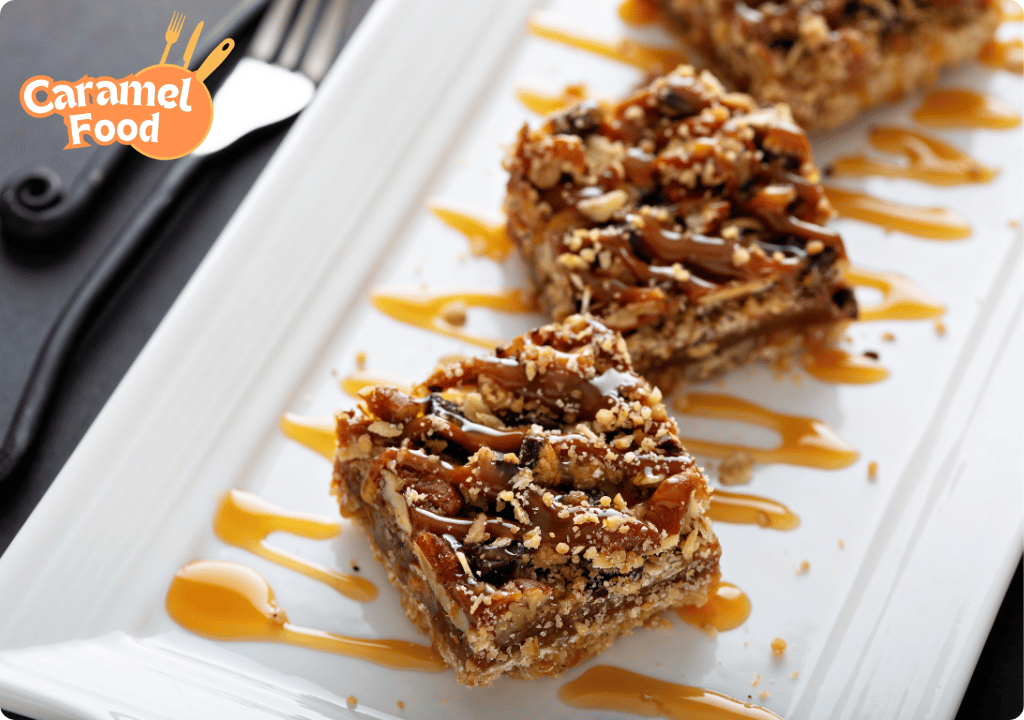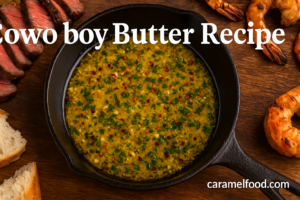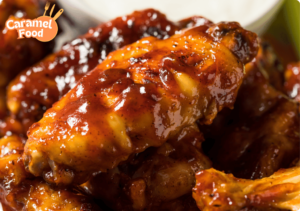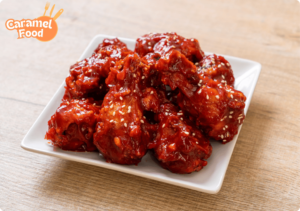Caramel is a culinary delight. It’s a sweet treat that can transform any dessert into a gourmet experience.
But have you ever tried making it at home?
Many people shy away from making caramel. They think it’s too complicated or time-consuming.
This is a misconception.
In this guide, we’ll share five easy caramel recipes. You’ll see how simple and rewarding it can be to make your own caramel.
So, are you ready to embark on a sweet adventure? Let’s dive into the world of homemade caramel.
What is Caramel?
Caramel is more than just melted sugar. It’s a culinary marvel that finds its place in various dishes.
At its core, caramel is sugar that has been heated until it browns. This process is known as caramelization.
The result is a rich, deep flavor with a hint of bitterness. Caramel recipe can be used in both sweet and savory dishes.
Its versatility makes it a favorite among chefs and home cooks alike.
Common uses for caramel include:
- Desserts like caramel flan or crème brûlée
- As a topping for ice creams and cakes
- Added into coffee or hot chocolate for a rich twist
- Incorporated into sauces for both sweet and savory dishes
Caramel comes in different forms. It can be a hard candy or a smooth sauce. These varying textures make it suitable for many culinary applications.
Understanding what caramel is and its versatility can inspire you to incorporate it into more dishes. Whether you’re looking to enhance a simple dessert or create a stunning sauce, caramel is your go-to ingredient.
The Basic Ingredients for Caramel
Making caramel requires only a handful of simple ingredients. These ingredients come together to create a delicious, versatile base.
The essential ingredients for caramel include:
- Granulated sugar for the sweetness and primary component
- Water to help dissolve the sugar and provide an even melt
- Unsalted butter for richness and a smooth texture
- Heavy cream to create a creamy, luscious consistency
- Optional salt or vanilla for flavor enhancement
Each ingredient plays an important role in the caramel-making process. Sugar is the main element, while water helps with control during heating.
Butter and cream contribute to the final texture, transforming sugar into a silky sauce. By mastering these basic ingredients, you unlock the potential to experiment with more advanced caramel recipes.
Classic Caramel Recipe
Creating a classic caramel is both an art and a science. It is easier than you might think, perfect for sweets and savory dishes alike.

To begin, gather your ingredients:
- 1 cup granulated sugar
- 1/4 cup water
- 6 tablespoons unsalted butter, cut into pieces
- 1/2 cup heavy cream
- Pinch of salt (optional)
- 1 teaspoon vanilla extract (optional)
Start by combining the sugar and water in a medium saucepan. Stir them together until the sugar appears wet and evenly mixed.
Place the saucepan over medium heat without stirring further. Swirl the pan occasionally to ensure even heating.
Watch closely as the sugar dissolves and begins to bubble. First, you’ll notice a light amber hue around the edges.
After a few minutes, the mixture darkens to a golden color. Test a drop on a light-colored plate to see the shade.
Remove from heat as soon as the desired color is achieved. Add butter carefully, one piece at a time, stirring until melted.
Gradually whisk in heavy cream. Be cautious, as the mixture will bubble vigorously when adding the cream.
Add a pinch of salt and vanilla, if desired. Stir gently until smooth and well-mixed.
Allow your caramel to cool slightly before using or storing it. This classic recipe yields a versatile caramel for various uses.
Tips for Perfect Caramel Every Time
Achieving perfect caramel takes practice and attention to detail. Following a few key tips can lead to success every time.
- Work with precise measurements: Accurate measurements ensure a balanced flavor and correct consistency.
- Control heat closely: Medium heat helps prevent burning, while a stable cooking temperature encourages even caramelization.
- Use the right pan: A heavy-bottomed saucepan evenly distributes heat, reducing the likelihood of hot spots.
- Avoid stirring while cooking: Swirl the pan instead of stirring to prevent sugar crystals from forming.
- Monitor color change: Keep a keen eye on the sugar’s color as it shifts from clear to rich amber.
By adhering to these tips, you pave the way for consistent, delicious caramel. Enjoy the process and watch as your creations improve with each attempt.
Quick Microwave Caramel
If you’re short on time, microwave caramel offers a swift alternative to the stovetop method. This quick caramel recipe is ideal for busy schedules.
To make this microwave caramel, gather these ingredients:
- 1 cup light brown sugar
- 1/2 cup unsalted butter
- 1/4 cup light corn syrup
- 1/2 cup sweetened condensed milk
- 1 teaspoon vanilla extract
- Pinch of salt (optional)
Start by combining the brown sugar, butter, corn syrup, and condensed milk in a microwave-safe bowl. Mix them together until roughly combined.
Microwave the mixture on high for two minutes. Carefully stir to ensure everything is well-blended.
Return the bowl to the microwave and heat for another two minutes. Watch for bubbling and ensure it doesn’t overflow.
After four minutes total, remove the bowl and stir again. The caramel should thicken as it cools slightly.
Add the vanilla extract and a pinch of salt, if desired. Stir until the texture is smooth and creamy.
Be careful when handling the bowl, as it will be hot. Allow the caramel to cool before using it as a topping or sauce.
Microwave caramel is perfect for drizzling over ice cream or popcorn. Its quick preparation makes it a favorite for spontaneous dessert cravings.

Safety Tips When Making Caramel
Caramel-making involves hot sugar, which can be dangerous. Following safety tips is crucial to preventing accidents.
Always use caution when cooking sugar, whether stovetop or microwave. Hot caramel can stick to skin and cause severe burns.
Ensure the cooking area is well-ventilated. Caramel produces steam and fumes that can fill a kitchen if not managed properly.
Use appropriate equipment, such as a heavy-bottomed pan and heat-resistant utensils. These tools help prevent tipping and ensure control during stirring.
By keeping these safety tips in mind, you can enjoy making caramel without risk. Prioritize safety alongside flavor for the best caramel experience.
Creamy Caramel Sauce
A rich, creamy caramel sauce can elevate any dessert. Its velvety texture pairs beautifully with both sweet and savory dishes.
To create this luxurious sauce, you’ll need only a few simple ingredients:
- 1 cup granulated sugar
- 6 tablespoons unsalted butter (cut into pieces)
- 1/2 cup heavy cream
- 1/2 teaspoon vanilla extract
- Pinch of salt
Begin by melting the sugar over medium heat in a heavy-bottomed saucepan. Stir with a heat-resistant spatula or wooden spoon to ensure even melting.
As the sugar melts, it will transition from clear to a golden amber color. This transformation signals it’s time to add the butter.
Carefully add the butter, mixing until it is fully incorporated. Expect some bubbling as the butter blends with the melted sugar.
Remove the saucepan from heat and slowly stir in the heavy cream. Adding cream will produce steam, so pour it in gradually to prevent splattering.
Once the cream is fully mixed, return the saucepan to low heat. Simmer for a few minutes to thicken the sauce to your desired consistency.
Finally, stir in the vanilla extract and a pinch of salt. These ingredients enhance the sauce’s flavor, making it more complex and delicious.
This creamy caramel sauce can be drizzled over cakes, stirred into coffee, or served alongside fresh fruit. Its versatility makes it a staple in any kitchen.
Storing Your Homemade Caramel
Proper storage of homemade caramel is essential to maintain its flavor and texture over time. Follow these tips for the best results.
Once cooled, place the caramel in an airtight container. This prevents moisture from affecting the caramel’s consistency.
Store the container in a cool, dry place if using in a few days. If not using immediately, refrigerate to prolong freshness.
To enjoy caramel again, reheat it gently in the microwave or over low heat on the stovetop. Gradual warming preserves its smooth texture.
By adhering to these storage tips, you can savor your homemade caramel’s delightful taste long after you’ve made it.
Salted Caramel Variation
Salted caramel combines sweetness with a hint of salt, creating an irresistibly balanced flavor. It’s perfect for those who enjoy a nuanced taste in their desserts.
To make salted caramel, start with the classic caramel recipe. You’ll need to adjust the ingredients slightly:
- 1 cup granulated sugar
- 6 tablespoons unsalted butter (cut into pieces)
- 1/2 cup heavy cream
- 1 teaspoon sea salt or kosher salt
- 1/2 teaspoon vanilla extract
Start by melting the sugar over medium heat, stirring occasionally until it’s a uniform amber color. Once the sugar has melted, add the butter, stirring until fully incorporated.
After the butter has melted, gradually add the heavy cream. The mixture will bubble vigorously, so add the cream slowly and carefully.
Remove from heat and stir in the vanilla extract. Finally, add the sea salt or kosher salt. Stir well to ensure the salt disperses evenly throughout the caramel.
Let the salted caramel cool slightly before using it to allow the flavors to develop fully. The salt enhances the caramel’s sweetness and balances it out, offering a delightful contrast.
Salted caramel works wonders in a variety of recipes. Pour it over ice cream, use it as a cupcake filling, or enjoy it straight from the jar with a spoon.
Serving Suggestions for Caramel
Caramel is a versatile delight, easily paired with a variety of dishes. Its rich flavor complements many dessert and snack options.

Here are some serving suggestions to inspire your next caramel creation:
- Drizzle over pancakes or waffles for a sweet morning treat.
- Dip apple slices for a simple, delicious snack.
- Pair with pretzels to enjoy sweet and salty goodness.
Caramel can add a sophisticated touch when used as a topping for cheesecakes or layered in parfaits. It’s also a fantastic addition to coffee drinks, providing a comforting sweetness.
Consider using caramel as a sauce for bread puddings or as a garnish on milkshakes. Its possibilities are endless, making it a favorite for both everyday and special occasions.
Experiment with different combinations to find your favorite way to enjoy caramel. Each pairing offers a unique taste experience.
Dairy-Free and Vegan Caramel Option
For those who avoid dairy, creating a caramel that fits your dietary preferences is entirely possible. Vegan caramel recipes often use coconut milk, which offers a creamy texture and delightful flavor.
To start, gather these simple ingredients:
- 1 cup coconut milk or full-fat coconut cream
- 3/4 cup maple syrup
- 1/2 teaspoon vanilla extract
- Pinch of sea salt
Begin by combining the coconut milk and maple syrup in a saucepan. Stir these ingredients over medium heat until the mixture begins to boil.
Once boiling, reduce to a simmer, allowing the mixture to thicken. Stir occasionally to prevent sticking and to ensure even cooking.
After 15-20 minutes, you’ll notice the caramel’s texture becoming thicker. At this point, remove it from the heat and stir in the vanilla extract and sea salt.
Allow the caramel to cool, letting it set and develop its flavors. The result is a rich, smooth dairy-free caramel perfect for anyone seeking a vegan-friendly option.
This vegan caramel pairs well with fruit, can be used as a dessert topping, or enjoyed as a dip. It’s an excellent choice for those looking to incorporate plant-based ingredients into their sweet treats.
The Role of Ingredients in Caramel-Making
Each ingredient in caramel plays a critical role in the outcome. Understanding these roles helps achieve perfect caramel every time.
Sugar is the primary ingredient and offers sweetness as it caramelizes. As it melts, it undergoes the Maillard reaction, giving caramel its distinct flavor and color.
Butter adds richness, providing that melt-in-the-mouth sensation typical of smooth caramel. Meanwhile, heavy cream or a substitute adds liquid, ensuring the caramel remains creamy rather than becoming hard.
Adding vanilla or salt enhances the complexity of flavors. They balance sweetness, introducing a depth that elevates the caramel to a gourmet level. Each ingredient contributes to making caramel an indulgent delight.
Conclusion: The Joy of Homemade Caramel
Making caramel at home is a rewarding experience. Each recipe lets you explore different flavors and techniques, expanding your culinary skills. Homemade caramel offers endless opportunities to impress family and friends with delicious treats.
Whether you prefer classic, salted, or vegan versions, these easy caramel recipes cater to various tastes and occasions. The satisfaction of creating such delightful sweets from scratch is unmatched. Dive into the world of caramel-making and discover the magic yourself.



